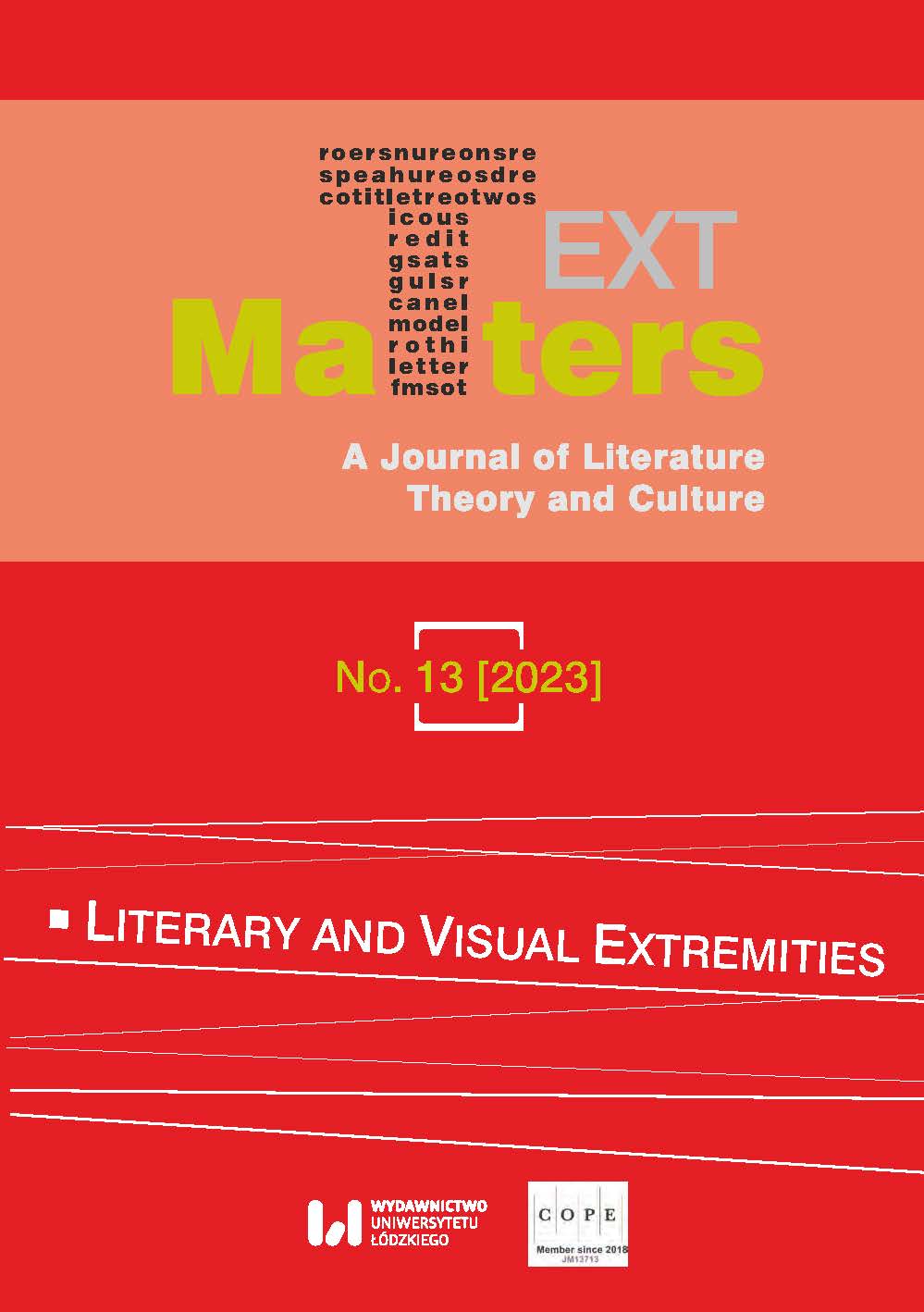Grievable Lives during the COVID-19 Pandemic: US-American Television, Melodrama and the Work of Mourning
DOI:
https://doi.org/10.18778/2083-2931.13.18Keywords:
COVID-19 on television, Corona fictions, US-American television, grievable life, This Is Us, Grey’s Anatomy, Station 19Abstract
The present article applies Judith Butler’s notion of “grievable life” to reflect on the manner in which selected US-American television series engaged in the work of mourning and memorializing the loss of life in the first two years of the COVID-19 pandemic, with the aim of noting which lives were deemed “lose-able or injurable” (Butler, Frames 1), and how precarity of life was reflected by fictional narratives that were conceived and produced during the first waves of the pandemic. The article focuses in particular on the way in which network scripted programming operating within the melodramatic convention, namely This Is Us, Grey’s Anatomy and Station 19, incorporated pandemic storylines and which aspects of pandemic reality were highlighted or, conversely, avoided scrutiny.
Downloads
References
Berlant, Lauren. On the Inconvenience of Other People. Duke UP, 2022. https://doi.org/10.1215/9781478023050
Google Scholar
DOI: https://doi.org/10.1215/9781478023050
Butler, Judith. Frames of War: When Is Life Grievable. Verso, 2009.
Google Scholar
Butler, Judith. Gender Trouble: Feminism and the Subversion of Identity. Routledge, 1999.
Google Scholar
Butler, Judith. What World Is This?: A Pandemic Phenomenology. Columbia UP, 2022. https://doi.org/10.7312/butl20828
Google Scholar
DOI: https://doi.org/10.7312/butl20828
Cartus, Abigail, and Justin Feldman. “Motivated Reasoning: Emily Oster’s COVID Narratives and the Attack on Public Education.” Protean Magazine, 23 Mar. 2022, https://proteanmag.com/2022/03/22/motivated-reasoning-emily-osters-covid-narratives-and-the-attack-on-public-education/ accessed 10 Oct. 2022.
Google Scholar
Caruth, Cathy. Unclaimed Experience: Trauma, Narrative, and History. Johns Hopkins UP, 1996. https://doi.org/10.1353/book.20656
Google Scholar
DOI: https://doi.org/10.1353/book.20656
Center for Disease Control. “COVID Data Tracker.” Center for Disease Control, https://covid.cdc.gov/covid-data-tracker/#datatracker-home accessed 10 Nov. 2022.
Google Scholar
Chaney, Jen. “The Safe Progressivism of This Is Us.” Vulture, 7 Dec. 2016, http://www.vulture.com/2016/12/this-is-us-safe-progressivism.html accessed 15 Nov. 2022.
Google Scholar
Fiske, John. Television Culture. Routledge, 2017.
Google Scholar
Garber, Megan. “TV Review: NBC’s This Is Us Will Make You Cry.” The Atlantic, 20 Sept. 2016, http://www.theatlantic.com/entertainment/archive/2016/09/this-is-us-is-the-latest-addition-to-nbcs-must-weep-tv-lineup/500654 accessed 1 Dec. 2022.
Google Scholar
Grey’s Anatomy. Created by Shonda Rhimes, ABC, 2005–.
Google Scholar
Horton, Richard. The COVID-19 Catastrophe: What’s Gone Wrong and How to Stop It Happening Again. Polity, 2020.
Google Scholar
Johnson, Michael. “Hollywood Survival Strategies in the Post-COVID 19 Era.” Humanities and Social Sciences Communications, vol. 8, no. 1, 2021, pp. 1–8. https://doi.org/10.1057/s41599-021-00776-z
Google Scholar
DOI: https://doi.org/10.1057/s41599-021-00776-z
Kaplan, E. Ann. Trauma Culture: The Politics of Terror and Loss in Media and Culture. Rutgers UP, 2005.
Google Scholar
LaCapra, Dominick. Writing History, Writing Trauma (Parallax: Re-visions of Culture and Society). Johns Hopkins UP, 2014. https://doi.org/10.56021/9781421414003
Google Scholar
DOI: https://doi.org/10.56021/9781421414003
Love in the Time of Corona. Created by Joanna Johnson, Freeform, 2020.
Google Scholar
Lovelace Jr., Berkeley. “Covid is Officially America’s Deadliest Pandemic as U.S. Fatalities Surpass 1918 Flu Estimates.” CNBC, 20 Sept. 2021, https://www.cnbc.com/2021/09/20/covid-is-americas-deadliest-pandemic-as-us-fatalities-near-1918-flu-estimates.html accessed 3 Apr. 2023.
Google Scholar
Melamed, Lavid, and Philipp Dominik Keidl. “Pandemic Media: Introduction.” Pandemic Media: Preliminary Notes Toward an Inventory, edited by Philipp Dominik Keidl et al., Meson, 2020, pp. 11–20.
Google Scholar
Miceli, Barbara. “Colour-lines: Representation of Race and Ethnicity.” Reading Contemporary TV Series: Aesthetics, Themes, and Reception, edited by Miłosz Wojtyna et al., Peter Lang, 2022, pp. 105–18.
Google Scholar
Ostherr, Kirsten. Medical Visions: Producing the Patient Through Film, Television and Imaging Technologies. Oxford UP, 2013.
Google Scholar
Poniewozik, James. “The Night TV Went It Alone.” The New York Times, 13 Mar. 2020, http://www.nytimes.com/2020/03/13/arts/television/stephen-colbert-fallon-no-audience.html accessed 12 Nov. 2022.
Google Scholar
Ramirez, Christina Dugan. “Grey’s Anatomy Honors COVID Patients After Beloved Character Suffers Tragic Loss.” People, 10 Dec. 2020, https://people.com/tv/greys-anatomy-recap-fight-the-power/ accessed 21 Nov. 2022.
Google Scholar
Reagan, Leslie J., Nancy Tomes, and Paula A. Treichler. “Introduction: Medicine, Health, and Bodies in American Film and Television.” Medicine’s Moving Pictures: Medicine, Health, and Bodies in American Film and Television, edited by Leslie J. Reagan et al. U of Rochester P, 2007, pp. 1–16.
Google Scholar
Research Group Pandemic Fictions. “From Pandemic to Corona Fictions: Narratives in Times of Crises.” PhiN-Beiheft, vol. 24, 2020, pp. 321–44.
Google Scholar
Station 19. Created by Stacy McKee, based on Grey’s Anatomy by Shonda Rhimes, ABC, 2018–.
Google Scholar
Strehlau, Nelly. “Postfeminist Spectres: What Is Haunting Television Heroines?” Theoria et Historia Scientiarum, vol. XIV, 2017, pp. 39–53. https://doi.org/10.12775/ths.2017.003
Google Scholar
DOI: https://doi.org/10.12775/ths.2017.003
Superstore. Created by Justin Spitzer, NBC, 2015–21.
Google Scholar
The Good Fight. Created by Robert King, Michelle King and Phil Alden Robinson, CBS All Access/Paramount+, 2017–22.
Google Scholar
This Is Us. Created by Dan Fogelman, Rhode Island Ave. Productions/20th Century Fox Television, 2016–22.
Google Scholar
Treichler, Paula A. “Medicine, Popular Culture, and the Power of Narrative: The HIV/AIDS Storyline on General Hospital.” Medicine’s Moving Pictures: Medicine, Health, and Bodies in American Film and Television, edited by Leslie J. Reagan et al., U of Rochester P, 2007, pp. 93–132.
Google Scholar
“Using Ventilator Splitters During the COVID-19 Pandemic—Letter to Health Care Providers.” U.S. Food and Drug Administration, 9 Feb. 2021, https://www.fda.gov/medical-devices/letters-health-care-providers/using-ventilator-splitters-during-covid-19-pandemic-letter-health-care-providers accessed 1 Dec. 2022.
Google Scholar
Williams, Linda. “Melodrama Revisited.” Refiguring American Film Genres: History and Theory, edited by Nick Browne, U of California P, 1998, pp. 42–88.
Google Scholar
Yang, Rachel. “All the Shows Unrenewed Due to the COVID-19 Pandemic: GLOW, Stumptown, and More.” Entertainment Weekly, 9 Oct. 2020, http://ew.com/tv/all-the-shows-unrenewed-covid-19 accessed 20 Nov. 2022.
Google Scholar
Downloads
Published
Versions
- 2023-12-20 (3)
- 2023-12-20 (2)
- 2023-11-27 (1)
How to Cite
Issue
Section
License

This work is licensed under a Creative Commons Attribution-NonCommercial-NoDerivatives 4.0 International License.













